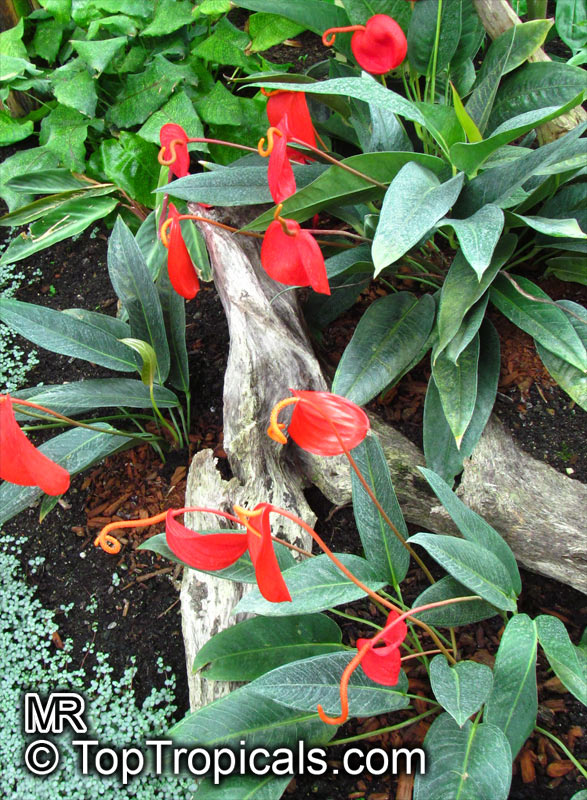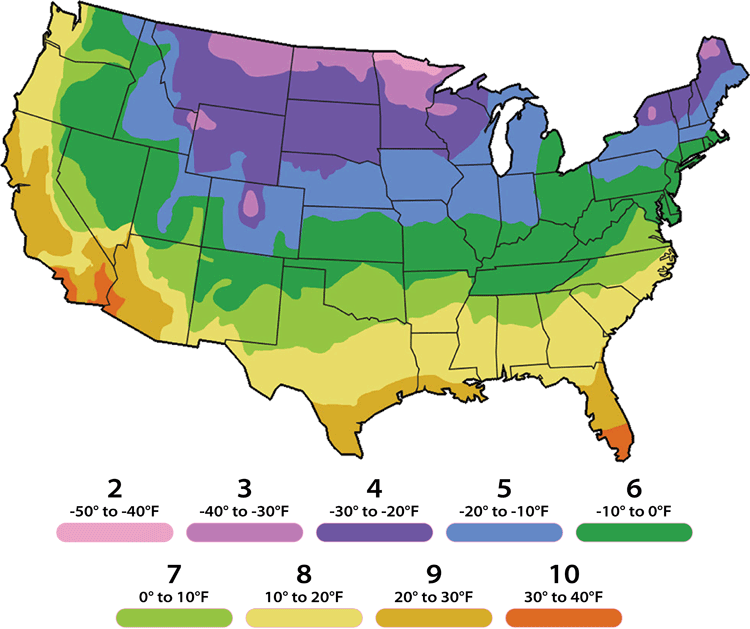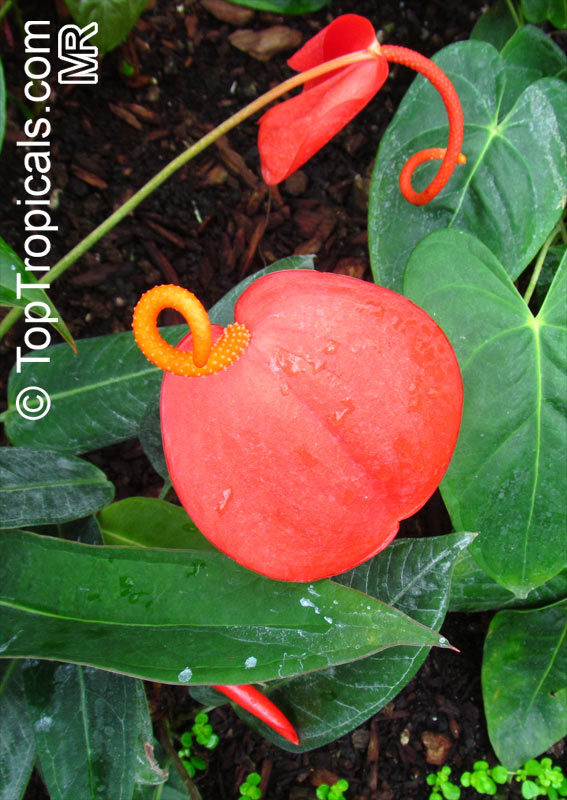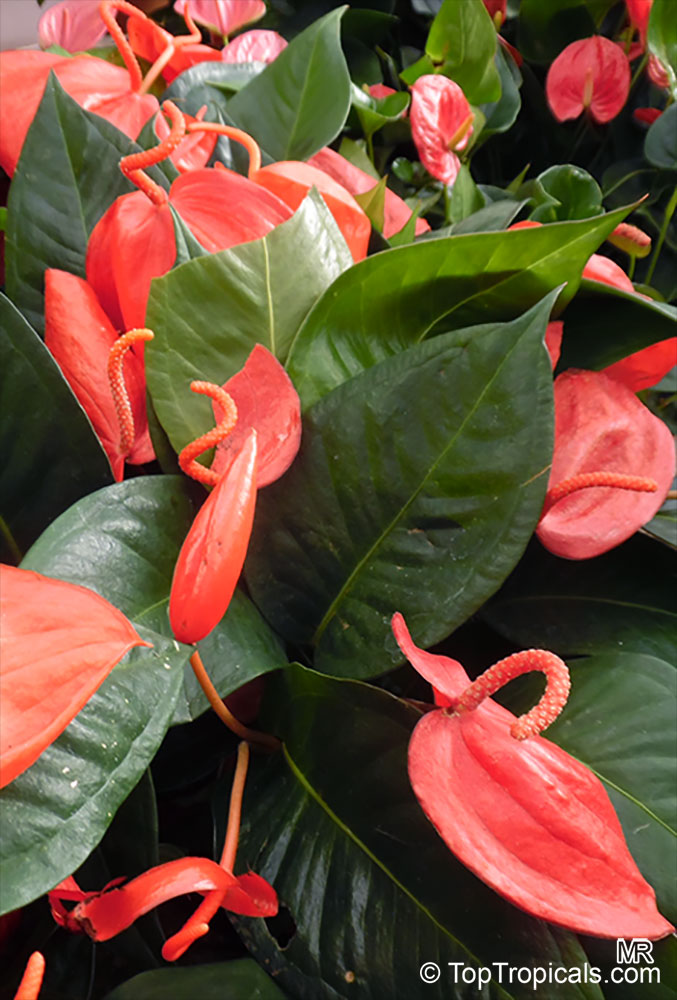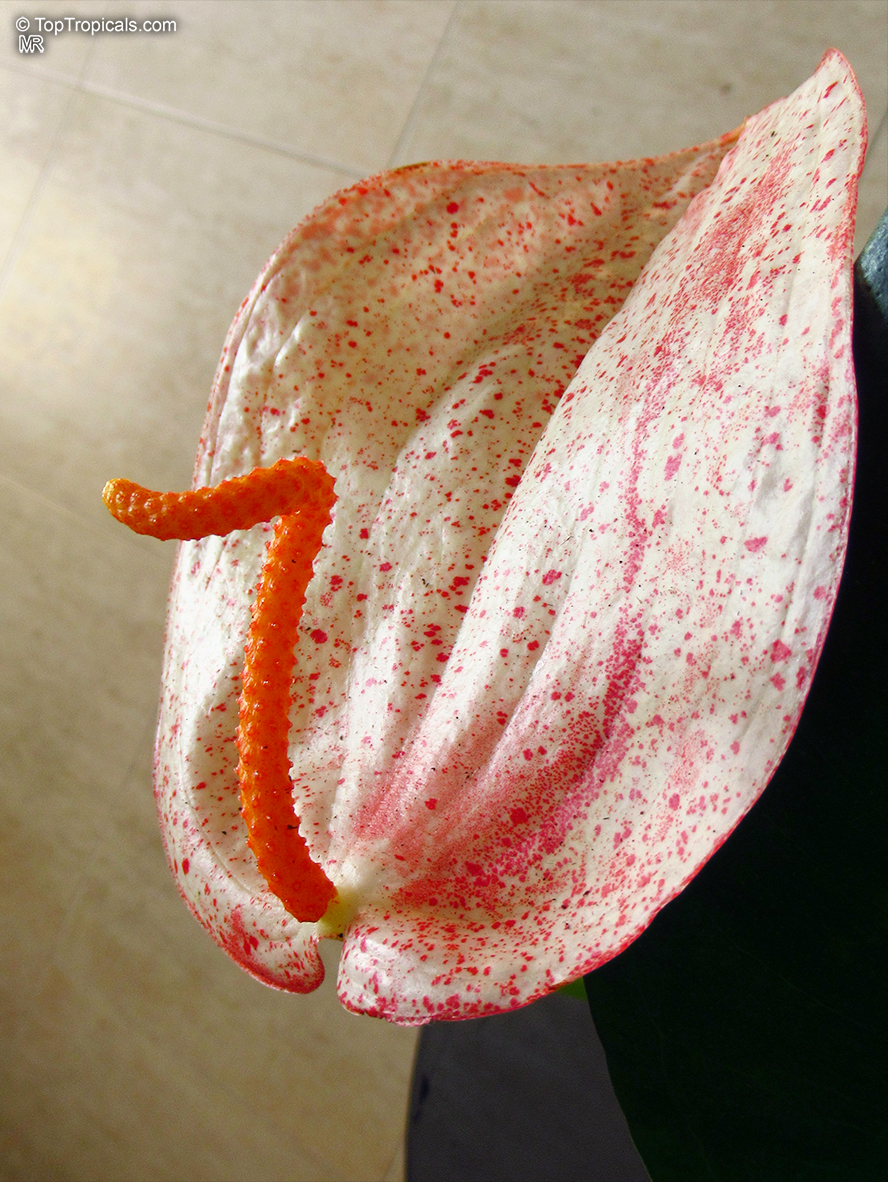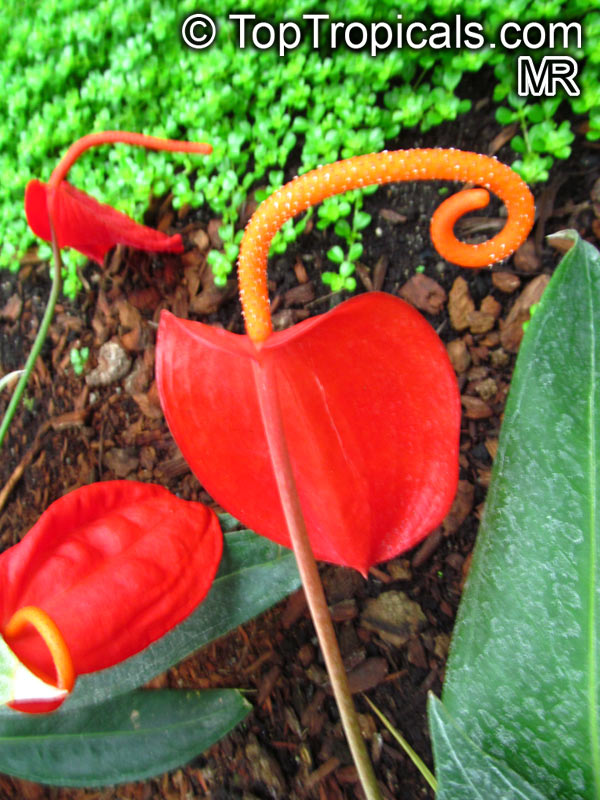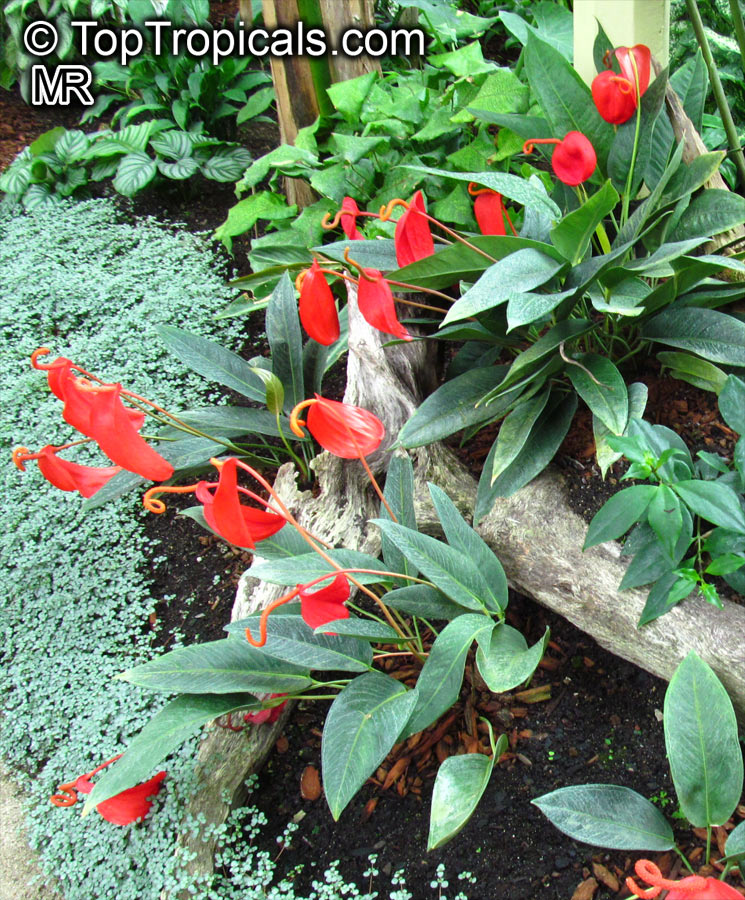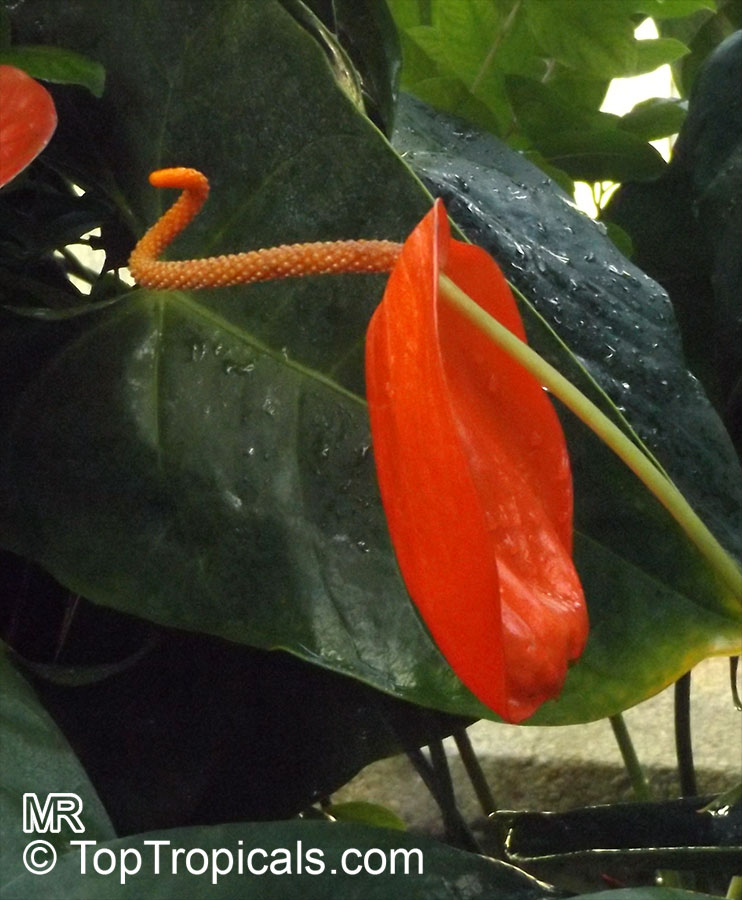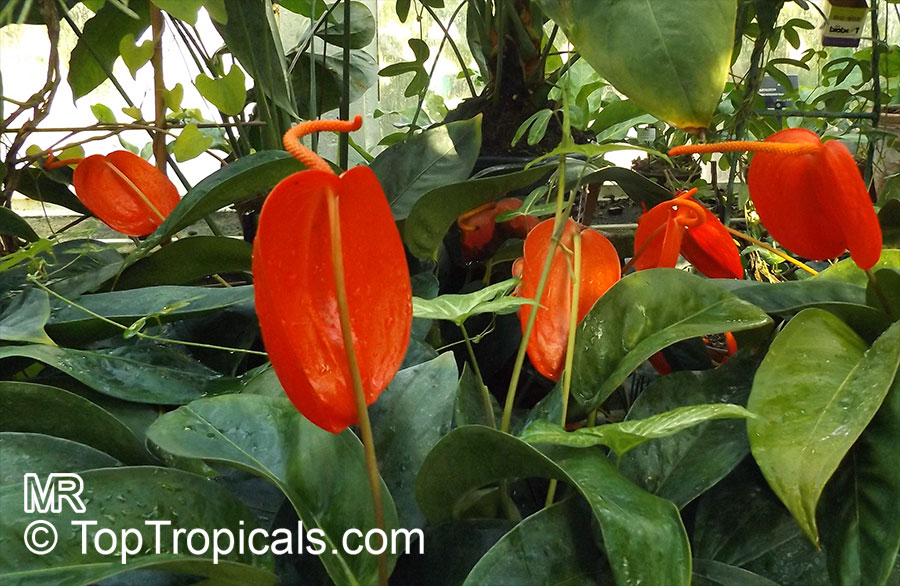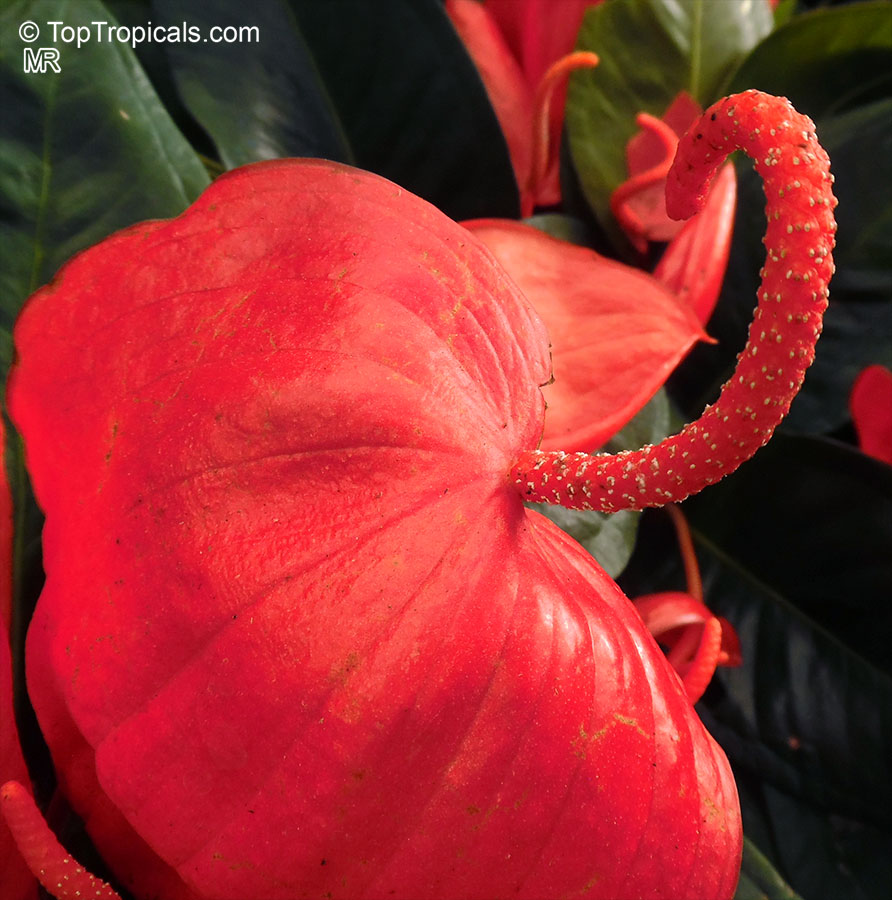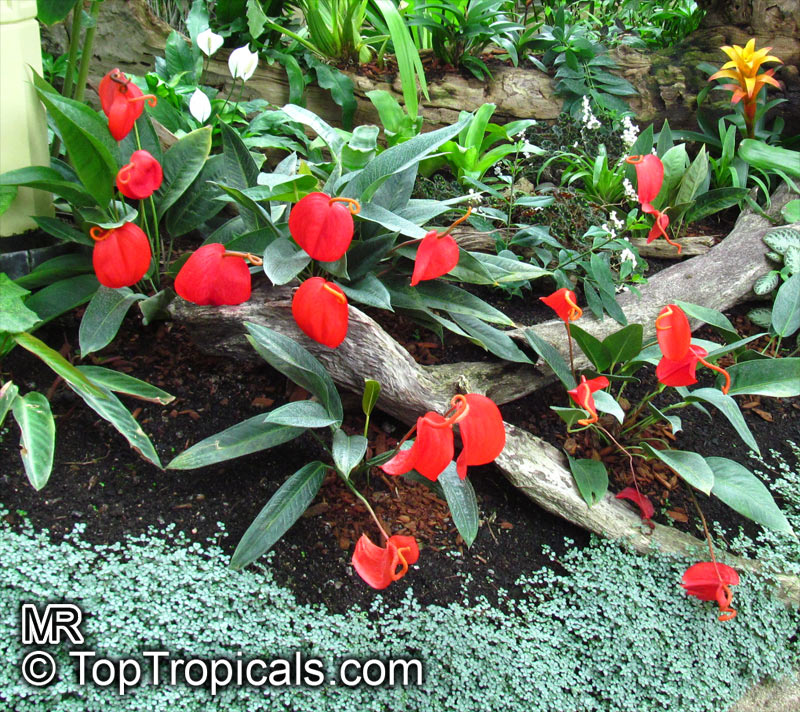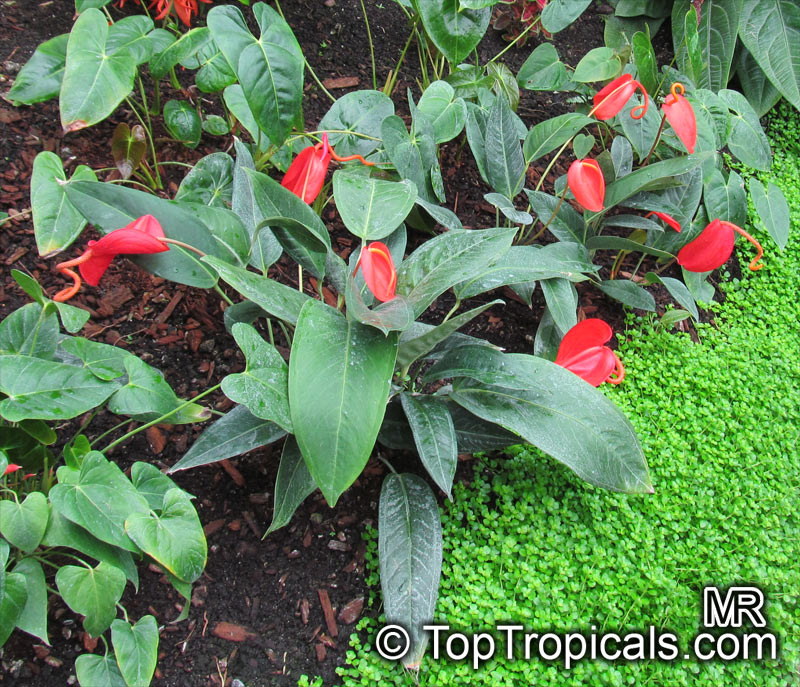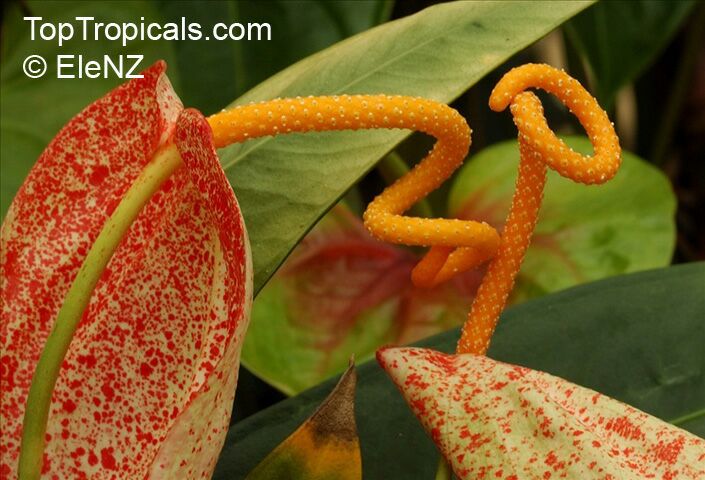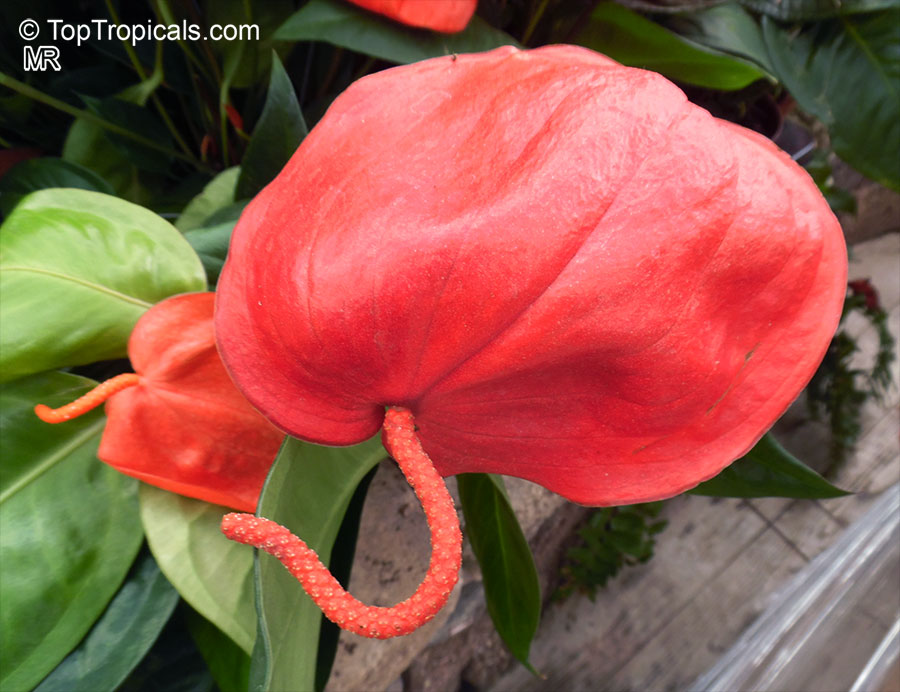Anthurium scherzerianum
Flamingo FlowerFamily: Araceae
Origin: Costa Rica








There are hundreds of species of this genus, all members of the Araceae family. The majority are fairly nondescript and a few are grown for their handsome foliage. There are only two species which are generally grown for their flowers, Anthurium andraeanum and Anthurium scherzerianum. Both types are basically epiphytic and grown best in a mix of bark, perlite and fern fiber such as that used in orchids or bromeliads. They will grow in soil but rarely perform well in that medium. Anthurium andreanum is the florist anthurium, a plant with red, white or pink spatches which have an artificial, plastic-like look. Give a moderately high light intensity but avoid direct sunlight during the spring and summer months when the sun is most intense. A high humidity is essential as is warm temperature, 70-75 days, 65 minimum at night. The potting mixture should be kept moist, but not soggy during the spring- summer period and allowed to dry slightly between waterings from late fall through winter. A feeding of weak manure water and a fish emulsion may be given every two weeks from late winter to mid summer. Anthurium scherzerianum is much smaller plant with smaller, less artificial looking flower spatches. This plant is much easier to grow as it will bloom with only moderately humid conditions and will tolerate slightly lower temperatures. Both species have a tendency to grow up out of the pot. The exposed aerial roots should be wrapped in moist sphagnum. When the plant is eight inches or higher out of the pot it may be cut off at the base and repotted in fresh potting mixture. Plants will occasionally split and form pups. These can be divided when large enough. Plants are also propagated by stem cuttings and seed, both of which are extremely difficult without greenhouse facilities.
Real Hawaiian lava rock is hand selected to provide a happy home for Anthurium.With reasonable care your volcano bonsai should last for years. Place in a bright window or on a countertop without direct sun and just keep a small amount of water in the saucer/tray provided. Requires consistently moist soil.
See Photo Gallery of Exotic Anthuriums.
Similar plants:
- Anthurium andraeanum (Flamingo Flower, Tail Flower)
- Anthurium argyrostachyum, Anthurium pandurifolium (Anthurium)
- Anthurium bakeri (Anthurium)
- Anthurium Black Dragon (Anthurium Black Dragon)
- Anthurium clarinervium (White-Veined Anthurium)
- Anthurium coriaceum, Pothos coriacea (Paddle-leaf Anthurium )
- Anthurium crenatum (Scalloped Laceleaf)
- Anthurium crystallinum (Crystal anthurium, Tail Flower)
- Anthurium gracile (Red Pearls Anthurium)
- Anthurium guayanum, Anthurium bonplandii subsp. guayanum (Anthurium)
